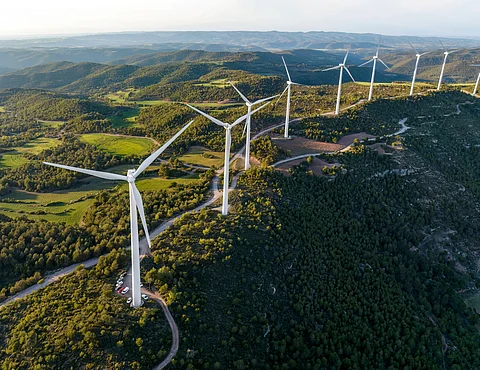

Dutch offshore wind target for 2040 lowered from 50GW to 30-40GW
Long-term 2050 target of 70GW now uncertain
NedZero warns delay could undermine climate goals and investor confidence
Offshore wind slowdown may impact EU commitments and Dutch energy independence
2024 climate outlook predicts shortfall in 2030 emissions reductions
The Netherlands has significantly scaled back its offshore wind energy ambitions, abandoning its 2040 capacity target of 50 gigawatts (GW) and casting uncertainty over its longer-term goal of 70 GW by 2050. The decision, outlined in a letter to parliament from the Ministry of Climate and Green Growth, forms part of the updated North Sea Wind Energy Infrastructure Plan, which responds to recent market developments and guides infrastructure planning in the Dutch North Sea over the coming years.
The government now aims to develop 30 GW to 40 GW of offshore wind capacity by 2040 — a reduction that industry leaders warn could jeopardise investment stability, energy independence and the Netherlands’ ability to meet national and European climate commitments.
Jan Vos, chairman of NedZero, a leading energy sector stakeholder, expressed concern over the revised targets, according to website Energy Monitor. “While it makes sense to delay the scaling up of supply, this unfortunately puts the cart before the horse. We certainly won’t achieve our climate goals this way,” Vos said.
Despite the revision, the sector remains committed to current plans. “We will continue developing offshore wind energy exactly as planned until 2032,” Vos noted, highlighting that the post-2032 ambition of 30 GW-40 GW remains a major challenge. He emphasised the need to drive demand for clean energy, saying: “We must stop using oil and gas.”
NedZero warned that policy uncertainty could deter private investment, a critical component of offshore wind expansion. The organisation also underscored the importance of domestic energy production to reduce import reliance and support a stable, affordable energy transition.
The Climate and Energy Outlook 2024 projects that the Netherlands may fall short of its 2030 emissions reduction target by one to five percentage points. The slower offshore wind rollout and stagnating green hydrogen development are key contributors. NedZero anticipates the 2025 KEV will reflect even greater challenges, threatening the legal obligation under the Dutch Climate Act to achieve a 95 per cent emissions cut and a CO₂-neutral energy system by 2050.
The revised targets also raise credibility issues regarding the Netherlands’ commitments under the North Seas Energy Cooperation, which aims for 193 GW of joint offshore wind capacity by 2040 and 260 GW by 2050. The country is also a signatory to the Ostend Declaration, targeting 300 GW of offshore wind by 2050.
As European nations race to strengthen energy sovereignty and meet climate goals, the Netherlands’ policy retreat highlights the growing tension between infrastructure planning, industrial decarbonisation and political resolve.